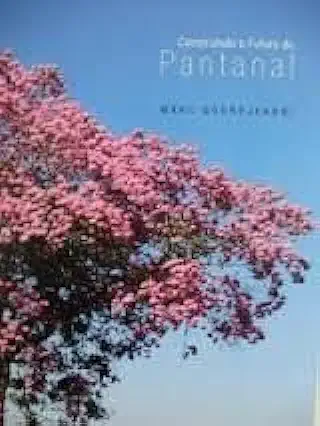
Building the Future of the Pantanal - Marc Dourojeanni
Building the Future of the Pantanal: A Vision for Sustainable Development
Introduction
The Pantanal is the world's largest tropical wetland, a vast and complex ecosystem that is home to an incredible diversity of plants and animals. It is also a region that is facing significant challenges, including climate change, deforestation, and pollution.
In his book, Building the Future of the Pantanal, Marc Dourojeanni presents a vision for sustainable development in the Pantanal. He argues that it is possible to protect the Pantanal's natural resources while also promoting economic development and improving the lives of local people.
The Pantanal: A Unique Ecosystem
The Pantanal is a unique ecosystem that is home to a wide variety of plants and animals. The region is characterized by its vast wetlands, which are flooded during the rainy season and dry out during the dry season. This cycle of flooding and drying creates a dynamic environment that supports a diverse array of life.
The Pantanal is home to over 1,000 species of birds, including the hyacinth macaw, the world's largest flying parrot. It is also home to over 300 species of mammals, including the jaguar, the giant anteater, and the capybara, the world's largest rodent.
The Challenges Facing the Pantanal
The Pantanal is facing a number of significant challenges, including:
- Climate change: Climate change is causing the Pantanal to become warmer and drier, which is having a negative impact on the region's plants and animals.
- Deforestation: Deforestation is a major problem in the Pantanal, as large areas of forest are being cleared for agriculture and other development.
- Pollution: Pollution from agriculture, industry, and tourism is also a major problem in the Pantanal.
A Vision for Sustainable Development
Marc Dourojeanni argues that it is possible to protect the Pantanal's natural resources while also promoting economic development and improving the lives of local people. He proposes a number of strategies for achieving this, including:
- Protecting the Pantanal's wetlands: The Pantanal's wetlands are essential for the survival of the region's plants and animals. It is important to protect these wetlands from drainage and other development.
- Promoting sustainable agriculture: Agriculture is a major economic activity in the Pantanal, but it can also have a negative impact on the environment. It is important to promote sustainable agriculture practices that protect the Pantanal's natural resources.
- Developing ecotourism: Ecotourism can be a sustainable way to generate income for local people while also protecting the Pantanal's natural resources. It is important to develop ecotourism in a way that minimizes the negative impacts on the environment.
Conclusion
The Pantanal is a unique and valuable ecosystem that is facing a number of significant challenges. However, it is possible to protect the Pantanal's natural resources while also promoting economic development and improving the lives of local people. By working together, we can build a sustainable future for the Pantanal.
Call to Action
If you are interested in learning more about the Pantanal and how you can help to protect it, I encourage you to read Building the Future of the Pantanal by Marc Dourojeanni. This book is a valuable resource for anyone who is interested in sustainable development and the conservation of natural resources.
Enjoyed the summary? Discover all the details and take your reading to the next level — [click here to view the book on Amazon!]